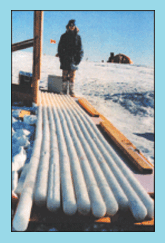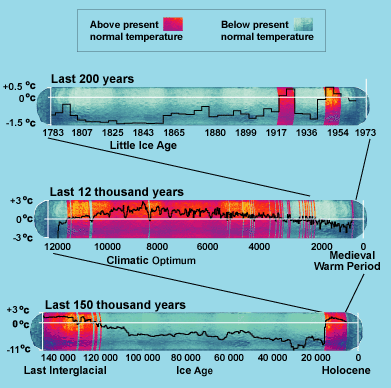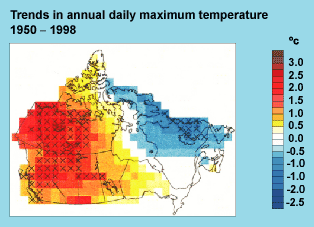
Natural Resources Canada > Earth Sciences Sector > Priorities > Climate Change Impacts and Adaptation > Climate Change in Canada
Degrees of Variation : Climate change in Nunavut Climate has always changed
The past preserved...
Ice cores drilled from the tops of Canadian Arctic ice caps provide detailed records of past environments, including temperature changes, precipitation changes, and changes in atmospheric pollutants and gases. On the walls of snow pits dug at the top of the ice cap, the seasonal layers can be seen and sampled. Reconstructed temperature records extend the very short weather station records back to before the last ice age.

Ice cores ready for transport
(J. Zheng, GSC 2000-054) |

Snow pit wall
(J.C. Bourgeois) |
Did you know?
200 years ago the climate was colder than today. During this period, called the 'Little Ice Age', northern waters were ice choked and European explorers could not navigate the Northwest Passage.
What the past is telling us...
Just as weather changes hour to hour and day to day, climate changes from decade to decade, millennium to millennium and ice age to ice age. Snow and ice records help us to understand the climate of the past. These records tell us that the climate has experienced many periods of warming and cooling over the last 150 000 years.

Canadian Arctic ice cores
(Devon + Agassiz ice cap)
(Data source: National Glaciology Program<) |
Current observations...
Current temperature trends show that over the past 50 years Nunavut has experienced both strong warming and cooling. The warming trend occurs primarily in the west, where as the east has undergone a cooling trend.

Trends in annual daily maximum temperature: 1950-1998
(Zhang et al., 2000) |
Climate variability...
Changes in the variability or in the frequency of extremes may be as important to life in Nunavut, as the longer term warming or cooling trends.

Eastern high arctic average summer temperatures: 1946-1998
(Data from Environment Canada) |
| 